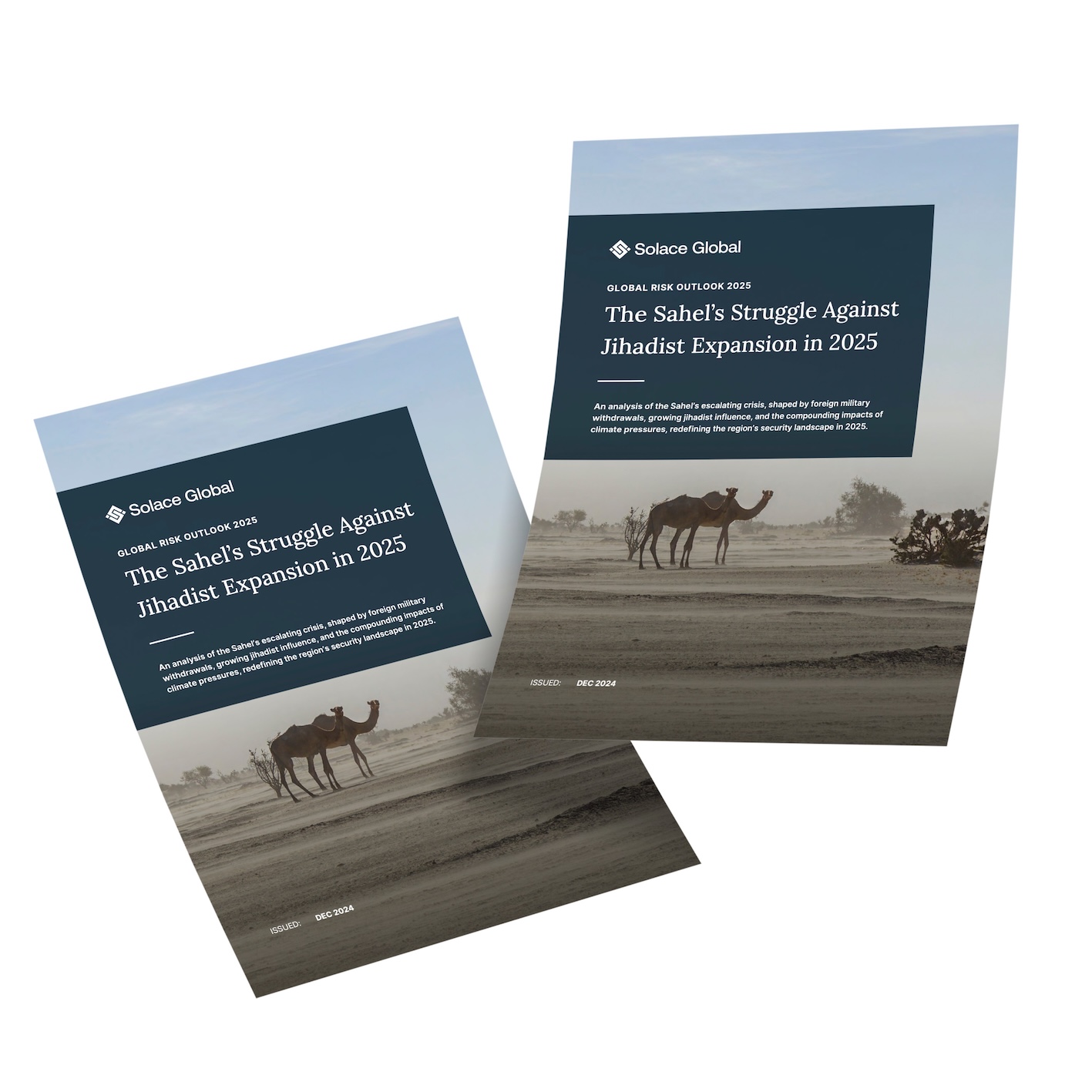Evacuations from High-Risk Locations Call +44 (0)1202 308810 or Contact Us →
The Sahel’s Struggle Against Jihadist Expansion in 2025

How Will Jihadist Groups Redefine Conflict in the Sahel in 2025?
The Sahel region is rapidly transforming into a hotspot for violence and instability. With foreign military forces withdrawn, rising jihadist influence, and climate pressures exacerbating local crises, 2025 marks a turning point in the region’s security landscape.
In 2024, violent extremist organisations (VEOs) like Jama’at Nasr al-Islam wal Muslimin (JNIM) and Islamic State Sahel Province (ISSP) escalated their attacks across Mali, Burkina Faso, and Niger. Civilians and capitals were deliberately targeted, creating widespread fear and chaos.
The withdrawal of foreign military support has left local juntas overstretched and vulnerable. Without critical Western intelligence and resources, the security vacuum has emboldened jihadist groups to expand their territories, bringing the violence closer to urban centers and neighbouring regions.
What Are the Risks to the Sahel’s Neighbouring Regions in 2025?
Jihadist expansion is likely to extend beyond the Sahel’s borders into northern Nigeria, Ghana, Côte d’Ivoire, and Benin.
Threats to Tourism and Aid: Attacks and kidnappings targeting tourists, businesses, and humanitarian workers are expected to increase near major economic hubs and coastal areas.
Border Region Conflicts: VEOs are strengthening local networks and exploiting grievances in marginalised communities, laying the groundwork for operations in adjacent areas.
What’s inside:
- Jihadist Tactics: How groups like JNIM and ISSP are leveraging weakened states and climate challenges.
- Foreign Withdrawal Consequences: The cascading effects of diminished Western military presence.
- Expanding Threat Zones: Which countries are at highest risk as violence spills beyond the Sahel.
- Future Scenarios: Potential outcomes, from regime collapse to increased regional cooperation against extremism.
Download the Full Report
